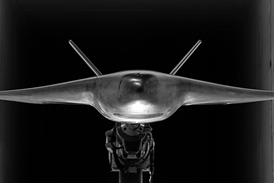Accidents prompt programme to give crew chance to practise controllability exercises as FAA special rule looms
Pilots and operators of N-registered Mitsubishi MU-2B twin turboprops are getting a jump on new US Federal Aviation Administration training requirements to be mandated soon.
The Special Federal Aviation Regulation, which was first contemplated after a spate of fatal MU-2B accidents in 2004 and 2005, is waiting for final sign-off by the FAA legal department after the proposed rules were published in September.
Although not yet final, about 100 pilots have already completed the new standardised training ahead of the SFAR under a grandfather provision in the rule, says Pat Cannon, Mitsubishi factory pilot and vice-president of Texas-based Turbine Aircraft Services.
|
|---|
The MU-2B does not currently require aircraft-specific training for pilots |
He demonstrated key elements of the flight portion of the new training regime to Flight International, taking off from Easton airport in Maryland on 10 April in an MU-2B-60 Marquise, a stretched version of the MU-2B-40 Solitaire.
Mitsubishi maintains a product support division in the USA, handling engineering, accident investigation and parts co-ordination with factories in Japan, among other tasks. A subcontractor to Mitsubishi, Turbine Aircraft Services works with MU-2B service centres to fulfil customer needs for parts, maintenance manuals, flight manuals, training programmes and FAA and insurance issues.
Although similar to higher-performance jet aircraft in speed and handling characteristics, the MU-2B does not currently require a "type" rating or any aircraft-specific training for general aviation pilots who represent the majority of the pilots in the fleet.
"Part of the reason for the focus on the aircraft is the private owner demographic," says Cannon. "[The MU-2B] is forgiving, if you're trained." Cannon, like many other MU-2B experts, attributes most accidents and incidents to pilot error rather than flaws with the aircraft design.
Under the new training programme, approved by the FAA in July, all pilots will get the chance to routinely practise a standard suite of manoeuvres and controllability exercises that highlight the exclusive traits of the MU-2B. These include the effects of roll control with spoilers (the MU-2B does not have ailerons), and the full-span double-slotted Fowler flaps, devices that increase wing area approximately 20% when fully deployed.
Without ailerons, Mitsubishi engineers were able to design a highly loaded shorter-span wing that could provide for a cruise speed of 315kt (580km/h) aircraft but also slow down to less than 120kt in the pattern with the full-span flaps, opening up airports with runways as short as 90m (3,000ft).
Source: Flight International
























